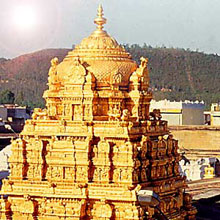On April 24, spiritual guru Sathya Sai Baba took his last breath. He left behind millions of mourners; the funeral at Puttaparthi, once a nondescript town in Andhra Pradesh, was attended by Prime Minister Manmohan Singh, Congress Party president Sonia Gandhi, iconic cricketer Sachin Tendulkar and half-a-million others. There were several millions more who viewed the ceremony online. “The man who was God is dead,” said a Time magazine obituary.
He also left behind billions of dollars in assets. When he died, his charitable trust — the Sri Sathya Sai Central Trust, set up in 1972 — controlled those assets. “The trust oversees projects across 165 countries,” reported the Kolkata-based daily The Telegraph. “It runs 25,000 temples, 75 to 100 hospitals and clinics, and nearly 3,150 educational institutions including two universities.” The paper estimated the trust’s net worth at between US$9 billion and US$33 billion. Considering that Sathya Sai Baba was solely in control of the trust — made up of donations such as US$108 million from Isaac Tigrett, the founder of Hard Rock Café — it would have made the Baba the richest man in India. Mukesh Ambani, who tops the list now, is worth US$27 billion, according to Forbes. (Incidentally, Mukesh Ambani’s wife, Nita Ambani, is one of the Sai Baba’s devotees, as is Sarah Ferguson, the Duchess of York.)
The Richest Temple
But the Sai Baba’s empire is not the richest religious establishment in India. That honor goes to the Tirupati temple in Andhra Pradesh, today run by the Tirumala Tirupati Devasthanams (TTD), a trust whose members are appointed by the government. The state had taken over the temple in 1987 after various allegations against the priesthood; The Supreme Court upheld the move in 1996.
The TTD’s exact wealth is unknown (only the Vatican is richer). But there are indicators. In February 2011, the TTD deposited 1,175 kg of gold (worth US$57 million at current prices). These were its collections from small donations by devotees. The total does not include bigger gifts such as the US$10 million diamond-studded gold crown presented by Karnataka tourism minister and industrialist Gali Janardhan Reddy. The 1,175 kg deposit had been preceded by a 3,000 kg deposit in April 2010, reports The Times of India.
Tirupati is the most visited religious site in the world; the number of pilgrims can reach 500,000 on special days. “But there is no chaos,” says B.N. Kumar, CEO of the Mumbai-based Concept PR, who has been there recently. “It is very professionally managed.” Essentially, it’s a business. Everything is treated as a source of revenue. Many pilgrims visit for a tonsure, or hair cutting ritual, and the hair is collected and auctioned. In the TTD budget for 2008-2009 (later figures are not available), the collection from the hair auction alone was estimated at US$20 million. “There is a separate complex for the tonsure,” adds Kumar. “People normally carry their own blades.” The hair is used to make wigs; some Hollywood beauties owe their tresses to distant Tirupati.
Temple Towns Galore
Tirupati is a primary example when it comes to discussing temples. But in India, there are thousands of them — and there are a large number of temple towns which still owe their existence entirely to the temple. Madurai in South India is typical. It has been built around the Meenakshi Sundareswarar temple. The new temple structure dates back to 1600; the earlier temple was sacked by invader Malik Kafur in 1310. The economy of Madurai centers on the shrine. There is very little manufacturing and industry, although one or two IT and BPO companies have strayed in recently. “Take away the temple and the pilgrimage tourism, and the city will become a shell,” says S. Krishnaswamy, professor in the department of genetic engineering at the Madurai Kamaraj University. “The city has a huge number of tour operators, hotels, eateries and shops catering to the temple tourism trade. Educational institutions have sprung up in keeping with the ancient Indian tradition of learning being a part of religious training.” All over the country, there are organized temple tours. And it’s not just Hindu temples. The Buddhists have a circuit, very popular with the Japanese. There are Muslim tours, Jain tours, Christian tours and Jewish tours, among others.
All this is big business, but does that make the money pilgrims donate at the temples and mosques any less entitled to being considered philanthropy? The big problem, of course, is that this money is largely unaccounted. Even the religious institutions and the trusts that run them are not rigorous about keeping donation records.
Some banks have been trying to take the process of donating to religious institutions online. If the initiatives are successful, they could give some idea of the total amounts involved. However, only the larger amounts are likely to be donated online — and these are often already recorded because they are part of individual or corporate tax planning. For smaller amounts, the new system is more a convenience than an inducement to change. The millions of devotees who actually visit the shrines will likely still head for the donation boxes, observers predict.
Online Donations
HDFC Bank recently extended its online donation facility to the Arulmigu Arunachaleswarar Temple, its 70th shrine. A. Rajan, the bank’s country head (operations), notes that the bank’s online donation program “started in the middle of 2007. I was invited to attend a seminar with several religious institutions on fund management in temples, and they wanted to speak to me as a banker. That’s when this idea struck me.” In temples in India, people may have to wait for hours in queues to put money into the donation boxes. “I wanted to offer to all our customers the facility to give to temples of their choice electronically,” continues Rajan. Although he declines to offer donation figures, the total number of hits on the 60 plus shrines last year was more than 100,000. Some online visitors gave a dollar, some a hundred times that and others nothing at all. HDFC Bank has added Sikh gurudwaras, Parsi temples, Jain temples, mosques and churches to its list. But the mosques and churches are not garnering as many donations. Rajan thinks these religions are more disciplined and donations are collected when devotees visit the churches and mosques, which they do more regularly. He is extremely skeptical of the data which show that Indians are poor givers. “Indians are equally philanthropic,” he says. “I have doubts on the calculation method used by the studies [that show otherwise].”
The figure in dispute is part of a study by Bain & Company, which shows that Indians give only 0.6% of GDP. Arpan Sheth, partner, Bain & Co, stands by the study’s findings. “I would assert that the ‘unorganized giving’ is not going to make that much of a difference because all the small giving — which happens elsewhere in the world as well — tends to be very small amounts. When you start adding it up, it won’t be substantive. People crib a lot about whether the number is 0.6 or 0.65. [But] it’s as scientific as you can get, because the data is just not there.”
What Are the Right Vehicles?
Actually, the key issue that emerges is not whether India and countries like it are giving more or giving less. What is far more important is whether they are giving right. Can priests and pastors serve better than professionals?
“It is interesting to say I give to my church, I give to my household help,” says Sheth. “It is much more impactful to say I’ve given to an NGO that is focused on pre-natal critical care for newborns. So the whole structure of giving — the maturation of the industry — is the real story. We should talk a lot more about whether we have the right vehicles to ensure that the people who really need it, and the people who this is aimed at, get the benefit out of it.”
Devdutt Pattanaik, chief belief officer of Kishore Biyani’s Future Group, feels that you cannot equate churches and mosques with temples. And the confusion starts because people don’t understand this. “Temples are not churches or mosques, meaning they are not community prayer halls,” he says. “They are the abodes of the gods. The deity is a living, breathing person. Wealth given to the temple ensures the livelihoods of priests and artisans and traders involved in the upkeep of the temple. For example, giving cows to the temple ensures the livelihood of a cowherd family. Donating land to the temple ensures livelihood to farmers. The temple was the place where orphans and destitutes got shelter. Temples also patronized artists, singers and dancers. The temple was the medium through which wealth flowed into society, bypassing the traditional exchange routes of the market.”
Falling from Grace
The trouble is that the temple has fallen from its pedestal. Priests are up to all sorts of peccadilloes — from sexual exploits to large-scale larceny. That’s true of Western churches, too: Dozens of defrocked priests are evidence enough. But in the West, the church is not the mainstay of charity any longer, experts note; it is a catalyst. “One reason the U.S. has long been ranked among the most generous nations is the higher rate of citizens active in their religion,” says Jason Wingard, vice dean, Wharton Executive Education. “This leads to more giving to the church itself. But studies have also shown that religious involvement encourages more giving to other causes.”
“Earlier temples were embedded institutions that had meaning and purpose,” says Rohini Nilekani, philanthropist and chairperson of the Arghyam foundation. “Today that is shifting.”


